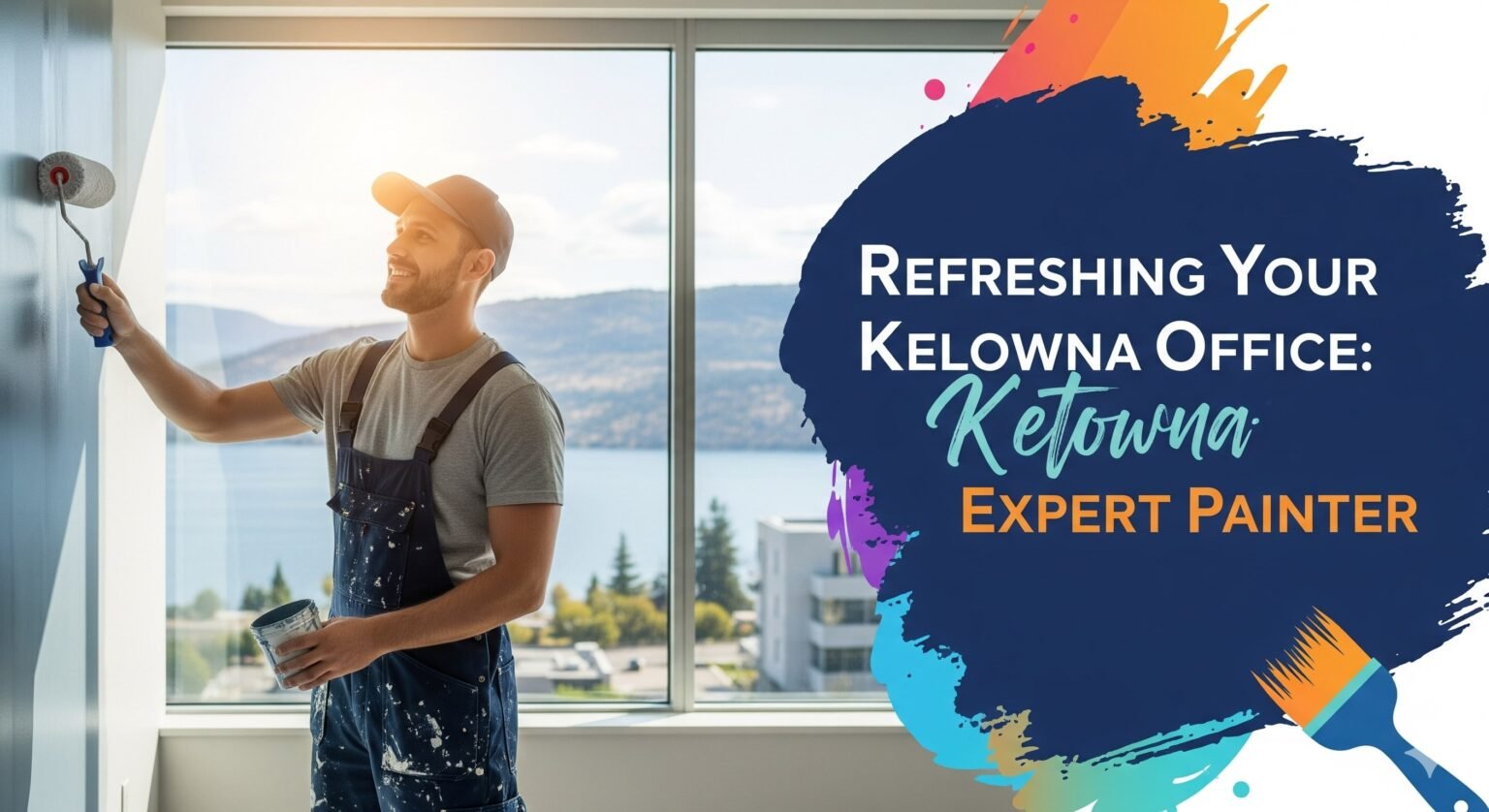Office Painter in Kelowna: Cost, Process, and What to Expect
Painting an office space is more than just an aesthetic improvement. It has a huge impact on shaping the workplace, reflecting the company’s image, and even influencing productivity. When businesses in Kelowna seek a refresh, hiring an office painter is a major step. However, many people ask about the cost. What does the process include? What can you anticipate on the journey?
This article breaks down these questions in detail so you can make informed decisions when planning your office painting project.
Why Businesses Hire an Office Painter
An office is not only a workplace—it’s also where clients, employees, and partners form impressions about your company. A professional finish can make the space feel organized, welcoming, and professional. Unlike painting a home, offices often come with challenges like:
- Large square footage
- Higher ceilings or specialized structures
- Minimal downtime for business interruptions
- Compliance with workplace safety standards
For these reasons, hiring an office painter ensures the job is completed efficiently and to the expected standard.
Typical Costs of Hiring an Office Painter in Kelowna
One of the first concerns business owners have is cost. Prices for office painting in Kelowna vary depending on several factors:
1. Size of the Office
Larger offices naturally require more paint and more time. A small office may cost only a few hundred dollars, while larger buildings can run into several thousand.
2. Condition of Walls
If walls are cracked, peeling, or need significant prep work, the price will rise. Smooth and well-maintained surfaces are faster and cheaper to paint.
3. Type of Paint and Finish
High-quality paints last longer and prevent scratching, although they are more expensive up front. For better air quality, many offices apply eco-friendly or environmentally friendly paints.
4. Accessibility
Offices with high ceilings, stairwells, or hard-to-reach spaces may require special equipment such as scaffolding, which adds to the total cost.
5. Timeline and Scheduling
If you need the job done outside of regular business hours to minimize disruption, some painters charge a premium.
Estimated Costs in Kelowna
Small office (500–1,000 sq. ft.): $1,000 – $2,500
Medium office (1,000–3,000 sq. ft.): $2,500 – $6,000
Large office (3,000+ sq. ft.): $6,000 and above
Keep in mind these are rough estimates. The exact cost will depend on the specifics of your project and the office painter you choose.
The Office Painting Process
Knowing the process ahead of time helps reduce surprises and ensures the project runs smoothly. A typical office painting project in Kelowna usually follows these steps:
1. Initial Consultation and Site Visit
The office painter will visit your space to assess the walls, measure dimensions, and discuss goals. They may also recommend colors based on lighting and the use of space.
2. Detailed Estimate
You’ll receive a written estimate outlining costs, paint options, and timelines. This allows you to compare quotes and understand what’s included.
3. Preparation
Before painting begins, the office needs to be prepped. This often includes:
- Moving or covering office furniture
- Protecting floors with drop cloths
- Repairing cracks or holes
- Cleaning surfaces for better paint adhesion
4. Priming
Depending on the wall condition and color choice, a primer may be applied. This step ensures even coverage and durability.
5. Painting
The painter applies one or more coats of paint. Professional office painters typically use rollers for large areas and brushes for trim and edges.
6. Drying and Ventilation
Good airflow is essential. Low-odor or quick-drying paints are often chosen to minimize disruption to staff.
7. Final Touches and Cleanup
Once the painting is done, touch-ups are applied, furniture is moved back, and the office is left clean.
8. Final Walkthrough
You’ll do a walkthrough with the office painter to ensure the results meet expectations.
What to Expect During the Project
Many businesses are concerned about downtime. Here’s what you should realistically expect:
Some disruption is unavoidable. Even with efficient scheduling, there may be limited access to certain areas while the paint dries.
Flexibility in scheduling helps. Some office painters in Kelowna work evenings or weekends to reduce interruptions.
Clear communication matters. Before the project begins, confirm how the painter will protect office equipment and how long drying will take.
Health and safety compliance. Professional office painters follow safety regulations, especially if scaffolding or chemical-based paints are used.
Tips for a Smooth Office Painting Experience
To ensure a stress-free project, consider the following:
Plan. Book an office painter several weeks in advance, especially during busy seasons like spring and summer.
Choose practical colors. Neutral tones are often preferred in office settings as they are professional and versatile.
Question about paint variety. Low-VOC paints improve indoor air quality.
Set expectations with staff. Let employees know which areas will be painted and when, so they can plan accordingly.
Review the contract carefully. Ensure it includes timelines, costs, and responsibilities.
Long-Term Benefits of a Professional Paint Job
While costs and scheduling are the immediate concerns, it’s worth noting the long-term benefits of hiring a skilled office painter:
Durability: High-quality paints last longer, saving you money on frequent repaints.
Professional appearance: A fresh coat of paint gives your office a clean, organized feel.
Better morale: A well-maintained workplace can improve employee satisfaction.
Brand alignment: Colors can reflect the company’s identity and create consistency in branding.
Final Thoughts
Hiring an office painter in Kelowna requires careful preparation, budgeting, and understanding of the process. Costs vary depending on size, condition, and paint selection, and the process includes preparation, painting, and cleanup. With the appropriate strategy, the experience can be smooth and the results long-term.


